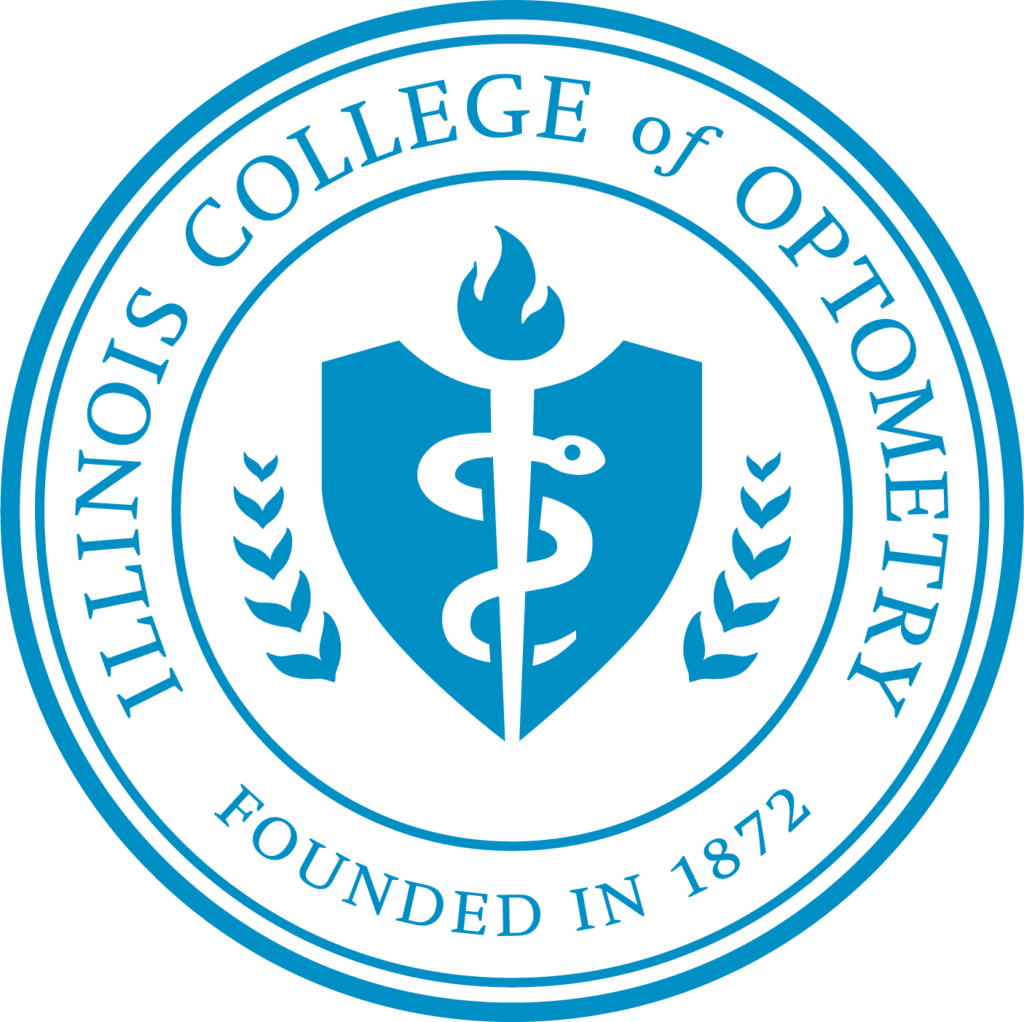Are you looking for the best optometry schools in USA? If yes then you might be curious about the best optometry schools in US. When you know which schools are best, it helps you pick the right one for you.
Table of Contents
When you have a great education, it increases your chances of success, both personally and professionally, especially in optometry. So, in this article, we will discuss more about these optometry schools in USA. Let’s get started!
Key Takeaways
- Optometrists are eye doctors who examine eyes, prescribe glasses or contacts, and treat eye conditions.
- To become an optometrist, you need a bachelor’s degree, a good score on the Optometry Admission Test (OAT), and a Doctor of Optometry (OD) degree from an accredited optometry school.
- Optometry school takes 4 years to complete.
- Some optometrists choose to do a 1-year residency after graduating to get more training in a specific area of optometry.
- The job outlook for optometrists is good, with a projected growth of over 4% in the next 10 years.
- Optometry schools can be expensive, costing between $20,000 and $55,000 per year.
Who is an Optometrist?
Optometrists are eye care professionals who conduct eye exams and prescribe glasses and contact lenses. They assist patients with low vision and treat various eye conditions.
It is important not to mix them up with opticians, who fit lenses but can’t write prescriptions, or ophthalmologists, who are medical doctors, unlike optometrists.
Eligibility Criteria for Optometrists
Optometry degrees are known as Doctor of Optometry (OD). They prepare you for exams by the National Board of Examiners in Optometry (NBEO). You will usually take four tests: NBEO parts I-III and Treatment and Management of Ocular Disease (TMOD).
To take these exams, you need to graduate from an accredited or pre-accredited institution. Once you pass, you can get a license by meeting any additional state requirements. Unlike ophthalmologists, who must complete medical school and residency, optometrists don’t attend medical school.
Ophthalmologists, as medical doctors, can do everything optometrists do. They can perform surgeries and handle complex eye problems. According to the Bureau of Labor Statistics (BLS), ophthalmologists earn around $270,090 on average each year.
How to Become an Optometrist?
To become an optometrist, you will need to follow these steps:
- You should start by earning a bachelor’s degree. It should focus on pre-med or biological sciences.
- You should take the Optometry Admission Test (OAT) to apply to optometry school.
- Once accepted, you must complete your Doctor of Optometry (OD) program.
- You should then gain hands-on experience in clinical practice under the guidance of an experienced eye care provider.
- You must pass the National Board of Examiners in Optometry exam. You will also need to pass other tests required for practicing optometry in your area.
- You may want to consider obtaining additional certifications, like the American Board of Optometry board certification.
How to Choose an Optometry School?
When picking an optometry school, there are several things to think about to make sure you are ready for a career in optometry.
First, you should consider the location. It is best to choose a school that is easy for you to get to, especially if you are commuting. If you plan to live close to the school, look into housing options nearby.
Next, you should look at the tuition costs. Optometry programs can be expensive because they involve a lot of training. On average, tuition per semester can range from $15,000 to $40,500. Some schools offer scholarships and grants to help students with costs.
You should check out the facilities too. Schools with modern equipment and labs are better for learning. You should look for schools with up-to-date technology and resources for optometry students.
You should think about the student body size. Smaller classes mean more one-on-one attention, while larger ones might offer fewer personalized opportunities.
Lastly, you should consider the faculty. They are crucial for teaching and guiding students. You should make sure the faculty members have the expertise and knowledge that align with your interests and goals.
List of the Top 16 Optometry Schools in USA
You have got 16 top-notch optometry schools if you are considering attending one in the U.S. Let’s have a look at them.
| Optometry School | Location | Acceptance Rate | Avg Undergrad GPA | OAT Average |
| Illinois College of Optometry | Chicago, Illinois | 26 % | 3.66 | 351 |
| University of Houston College of Optometry | Houston, Texas | 35 % | 3.53 | 348 |
| Indiana University School of Optometry | Bloomington, Indiana | 21 % | 3.71 | 357 |
| Midwestern University – Arizona College of Optometry | Glendale, Arizona | 27 % | 3.54 | 352 |
| Southern California College of Optometry | Fullerton, California | 26 % | 3.6 | 353 |
| University of Missouri – St Louis College of Optometry | St. Louis, Missouri | 32 % | 3.56 | 351 |
| UC Berkeley School of Optometry | Berkeley, California | 37 % | 3.42 | 355 |
| Pennsylvania College of Optometry, Salus University | Elkins Park, Pennsylvania | 24 % | 3.58 | 353 |
| Western University College of Optometry | Pomona, California | 29 % | 3.59 | 352 |
| University of Alabama at Birmingham School of Optometry | Birmingham, Alabama | 34 % | 3.55 | 350 |
| University of Pikeville Kentucky College of Optometry | Pikeville, Kentucky | 29 % | 3.49 | 348 |
| Pacific University College of Optometry | Forest Grove, Oregon | 21 % | 3.66 | 353 |
| Ohio State University College of Optometry | Columbus, Ohio | 24 % | 3.7 | 355 |
| Nova Southeastern University College of Optometry | Fort Lauderdale, Florida | 26 % | 3.58 | 352 |
| Southern College of Optometry | Memphis, Tennessee | 31 % | 3.53 | 349 |
| SUNY College of Optometry | New York, New York | 23 % | 3.71 | 357 |
1. Illinois College of Optometry

Illinois College of Optometry is known for its top rankings in optometry schools in USA. It is also called ICO. One of its famous graduates is Otto Frederick Rohwedder. He was the inventor of bread-slicing machines.
Each year, about 160 students graduate from here. They have a pass rate of over 92%. Students get hands-on training at the Illinois Eye Institute. ICO offers various residency programs, like ocular disease and vision rehabilitation.
If you are accepted into this optometry school, you will study on a beautiful campus located in Chicago. ICO plays a significant role in producing the best eye care professionals in the Midwest.
- Location: Chicago, Illinois
- Acceptance rate: 26%
- Average Undergrad GPA: 3.66
- OAT Average: 351
2. University of Houston College of Optometry

The University of Houston College of Optometry gives you a full curriculum along with hands-on experience in modern facilities. At the U.H. Health – Eye Care clinic, you can practice optometry in a real-world setting.
Every year, U.H.’s optometry program offers a different set of training. This gives you a unique learning experience.
- Location: Houston, Texas
- Acceptance rate: 35%
- Average Undergrad GPA: 3.53
- OAT Average: 348
3. Indiana University School of Optometry

At Indiana University’s School of Optometry, you will embark on a four-year journey. You will cover both the clinical and practical aspects of optometry. Their Doctor of Optometry (O.D.) degree program gets you ready to start examining patients in just 20 months.
- Location: Bloomington, Indiana
- Acceptance rate: 21%
- Average Undergrad GPA: 3.71
- OAT Average: 357
4. Midwestern University – Arizona College of Optometry
Midwestern University – Arizona College of Optometry is located in Glendale, Arizona. It is known for its high rankings in optometry schools. It boasts a graduation rate of 98%, meaning most students complete their studies.
With an average GPA of 3.53 and an OAT score of 624, students here perform well academically. However, they are not alone in their success.
The faculty is highly responsible with members who are fellows of the American Academy of Optometry and contribute to top journals. Recently, they even secured a $100,000 grant.
Students have the opportunity to participate in clinical rotations with community faculty. This lets them gain valuable real-world experience. Also, there are pre-clinical simulations to help students prepare for their future careers.
- Location: Glendale, Arizona
- Acceptance rate: 27%
- Average Undergrad GPA: 3.54
- OAT Average: 352
5. Southern California College of Optometry
At the Southern California College of Optometry, you will find a comprehensive program covering all aspects of optometry. They provide a wide range of residency opportunities. It offers excellent training for residents. This allows you to gain valuable experience in different optometry settings.
- Location: Fullerton, California
- Acceptance rate: 26%
- Average Undergrad GPA: 3.60
- OAT Average: 353
6. University of Missouri – St Louis
If becoming an optometrist is your goal, attending the UMiss-SL College of Optometry might be the right path for you.
With an acceptance rate of 31 percent and a pass rate of over 95 percent, they boast impressive numbers among optometry schools.
Students from all over the country come here and receive strong support throughout their education journey. The college values community, discovery, responsibility, and growth.
Programs focus on offering low-cost care, promoting inclusion, and celebrating diversity.
To get admission, you will need an excellent GPA, high test scores, compelling letters of recommendation, and substantial service hours.
- Location: St. Louis, Missouri
- Acceptance rate: 32%
- Average Undergrad GPA: 3.56
- OAT Average: 351
7. UC Berkeley School of Optometry
UC Berkeley School of Optometry is situated in Berkeley, California. This school has been around for nearly a hundred years. This makes it one of the oldest optometry schools. It is one of the pioneers, with only two others opening before it.
Many faculty and alumni from this institution have become presidents of prestigious optometry associations. They are highly ranked in optometry school rankings due to their impressive pass rate of nearly 93 percent.
The school prioritizes student success above all. Here, you will receive top-notch training and start working with patients from your first year.
By the time you finish the program, you will have spent an average of 2500 hours with patients. Also, you can pursue your research goals with support from resources like the esteemed Clinical Research Center.
- Location: Berkeley, California
- Acceptance Rate: 37%
- Average Undergrad GPA: 3.42
- OAT Average: 355
8. Pennsylvania College of Optometry, Salus University
At the Pennsylvania College of Optometry, you will find one of the oldest optometry schools in the U.S. It is part of Salus University. They provide a complete curriculum that includes early clinical experience and extensive externships.
You can personalize your program by taking elective courses or participating in a residency program. If you are looking to finish your optometry degree quickly, there’s an accelerated program available. This allows you to complete the program in just 36 months on campus.
- Location: Elkins Park, Pennsylvania
- Acceptance rate: 24%
- Average Undergrad GPA: 3.58
- OAT Average: 353
9. Western University College of Optometry
At Western University College of Optometry, they have designed their curriculum to prepare you for a successful optometry career. They focus on optometric rehabilitation, which includes neuro-optometry.
The WesternU Health Eye Care Institute provides a range of clinical services. With their extensive experience, they can treat all sorts of vision and eye conditions.
- Location: Pomona, California
- Acceptance rate: 29%
- Average Undergrad GPA: 3.59
- OAT Average: 352
10. University of Alabama at Birmingham School of Optometry
University of Alabama like many optometry schools receives NIH funding. It is a part of a $325 million research grant. They excel in optometry school rankings. It is because of their hands-on clinical training.
As future vision care professionals, you learn the necessary skills and knowledge to serve your communities effectively. Nearly 98 percent of students graduate from the program. This helps them to have successful careers in optometry.
- Location: Birmingham, Alabama
- Acceptance rate: 34%
- Average Undergrad GPA: 3.55
- OAT Average: 350
11. University of Pikeville Kentucky College of Optometry
If you are interested in optometry, University of Pikeville Kentucky College of Optometry might be a perfect choice for you. It is located in Pikeville, Kentucky, near the Appalachian Mountains. It is Kentucky’s only optometry school and was founded in 2016.
University of Pikeville Kentucky College of Optometry is building its name with its state-of-the-art $60 million Health Professions Education Building. This is a place where future doctors in various healthcare fields are trained.
They even offer grants to help cover expenses for the Optometry Admissions Test. The university has an acceptance rate of 38 percent and a pass rate of nearly 92 percent. The University of Pikeville Kentucky College of Optometry stands out among optometry schools in the USA.
- Location: Pikeville, Kentucky
- Acceptance rate: 29%
- Average Undergrad GPA: 3.49
- OAT Average: 348
12. Pacific University
At Pacific University’s College of Optometry, you will get ready for your optometry license and career. The program blends classroom learning and hands-on practice in clinics.
- Location: Forest Grove, Oregon
- Acceptance rate: 21%
- Average Undergrad GPA: 3.66
- OAT Average: 353
13. Ohio State University College of Optometry
Ohio State University College of Optometry is known as one of the best schools run by a state education department in the country. It is located in Columbus, Ohio, Their optometry college is highly sought after and earns a spot in optometry school rankings.
The faculty includes experts in optical technology, contributors to medical journals, and esteemed members of important faculty organizations. Both faculty and students have received prestigious awards, like the Low Vision Educational Grant and the Prentice Medal Award for distinguished scientists.
The students have a pass rate of nearly 97 percent. The university emphasizes student success as much as research. Each year, only 64 students are admitted. This ensures they benefit from a supportive faculty and top-notch resources.
- Location: Columbus, Ohio
- Acceptance rate: 24%
- Average Undergrad GPA: 3.70
- OAT Average: 355
14. Nova Southeastern University College of Optometry
In Nova Southeastern University College of Optometry, you will split your time between two focuses: two years of science instruction and two years of clinical studies. No matter where you are in your studies, you will receive unparalleled support.
You will have access to advanced technology and opportunities like international mission trips. The faculty includes top experts in ocular testing and fellows of the American Academy of Optometry and Leaders.
NSU’s College of Optometry boasts an impressive 98 percent pass rate. Each year, only 94 students are admitted, but they emerge as some of the finest in the field.
- Location: Fort Lauderdale, Florida
- Acceptance rate: 26%
- Average Undergrad GPA: 3.58
- OAT Average: 352
15. Southern College of Optometry
Southern College of Optometry has been around since 1932. This makes it one of the oldest optometry schools in the country. It is located in Memphis, Tennessee.
The school focuses on modernity and underwent a $10 million expansion in 2013 to update its facilities with the latest technology.
A part of the campus, called The Eye Center, sees around 60,000 patients seeking eye care. This helps the students gain hands-on clinical experience.
The program admits 136 students each year. The students have a nearly 99 percent pass rate. Fourteen alumni have become presidents of the American Optometric Association.
With a student-faculty ratio of 9:1, this institution maintains high optometry school rankings. It also awards over 60 endowed scholarships annually.
- Location: Memphis, Tennessee
- Acceptance rate: 31%
- Average Undergrad GPA: 3.53
- OAT Average: 349
16. SUNY College of Optometry
SUNY College of Optometry is quite selective. It has only a 23 percent acceptance rate. This makes it one of the most exclusive in optometry school rankings.
Successful applicants usually have an average GPA of 3.5 and OAT scores of 345. But, the pass rate is nearly 97 percent. So most students who start also finish. The program provides substantial support with $4 million in yearly funding for research programs.
With a 50-year history, the college boasts doctors who have received prestigious awards like the 2019 American Optometric Association Optometrist of the Year and the Johnson & Johnson Vision Award of Excellence for Contact Lens Patient Care.
- Location: New York, New York
- Acceptance rate: 17%
- Average Undergrad GPA: 3.71
- OAT Average: 357
Why Should You Become an Optometrist?
When people come to your optometry office, you have the chance to make a real difference in their lives. You will check their vision, prescribe glasses or contacts, treat eye injuries, and even spot and prevent diseases.
In the optometry field, job opportunities are expected to grow by over 4 percent in the next ten years. With the aging population, there is a growing need for optometrists across the country.
In this profession, you have plenty of freedom. Optometrists are sought after in both rural and urban areas in all 50 states. You can work directly with patients in clinics, teach at schools, or opt for research.
What will You Learn in the Doctor of Optometry (OD) Program?
Optometry programs prefer candidates with a background in science, so it is beneficial to pursue a bachelor’s degree in biology or chemistry. You should get good grades in college. It is very important.
The average GPA for applicants is 3.36, according to the Association of Schools and Colleges of Optometry (ASCO). You should aim for an excellent score on the Optometry Admission Test (OAT) – a score of 350 and above is considered excellent. Many applicants take the test while still in undergrad.
In optometry programs, you will study various subjects like patient care, ocular disease, communication, pharmacology, optics, vision science, and clinical decision-making. You will also gain practical experience by completing clinical hours, and eventually examining patients under supervision.
After graduating, you may choose to do a residency before taking your NBEOs. Residency programs typically last one year and allow you to specialize. Around 25 percent of optometrists pursue residencies, according to the American Optometric Association (AOA).
Can You Enroll in the Doctor of Optometry Program Online?
You cannot currently get a fully accredited optometry degree online. But NECO is taking steps to change that. They are introducing a hybrid option in 2024. It blends online and in-person learning.
Other schools might also start offering similar programs soon. If you are already in the field, some schools like SUNY College of Optometry provide online courses for continuing education.
Frequently Asked Questions
1. Is it difficult to get into optometry school in the USA?
Optometry schools can be tough to get into, so many people earn a bachelor’s degree before applying. It usually takes four years to finish an OD program. Some students decide to do a one-year residency afterward for more specialized training.
2. How long can it take to become an optometrist in the USA?
Becoming an optometrist does not take as long as becoming an ophthalmologist. But it still takes about seven to eight years. You usually need to finish your bachelor’s degree before applying to a four-year optometry program. Some schools may accept you after three years of college.
3. What is the most difficult year of optometry school?
In optometry school, the second year is known to be the toughest. This is when you will dive into subjects like systemic disease, ocular disease, and pharmacology. The workload gets heavier compared to the first year because the material is more complex. You can expect to have around 2-3 quizzes every week.
4. How much would it cost to become an optometrist in the USA?
Optometry school costs can vary widely. It ranges from around $20,000 to nearly $55,000 per year. This big difference in tuition fees contributes to the high debt many optometry students face. On average, optometry graduates have student loans totaling at least $130,000.
Conclusion
If you know the best optometry schools in USA, it can guide you to the best places to study. Optometry school acceptance rates vary. But, you can improve your chances by improving your background and focusing on academics.












Add Comment